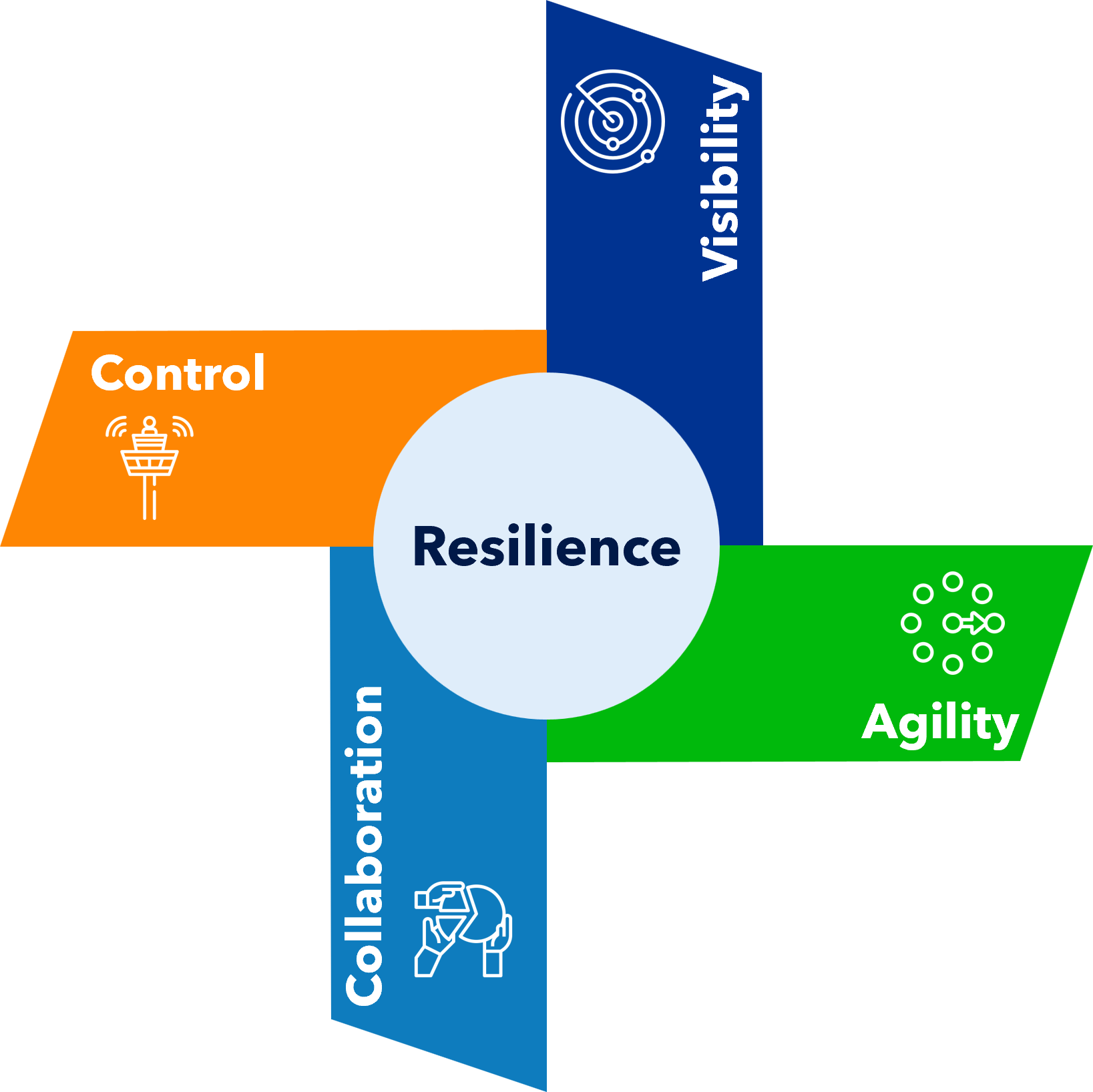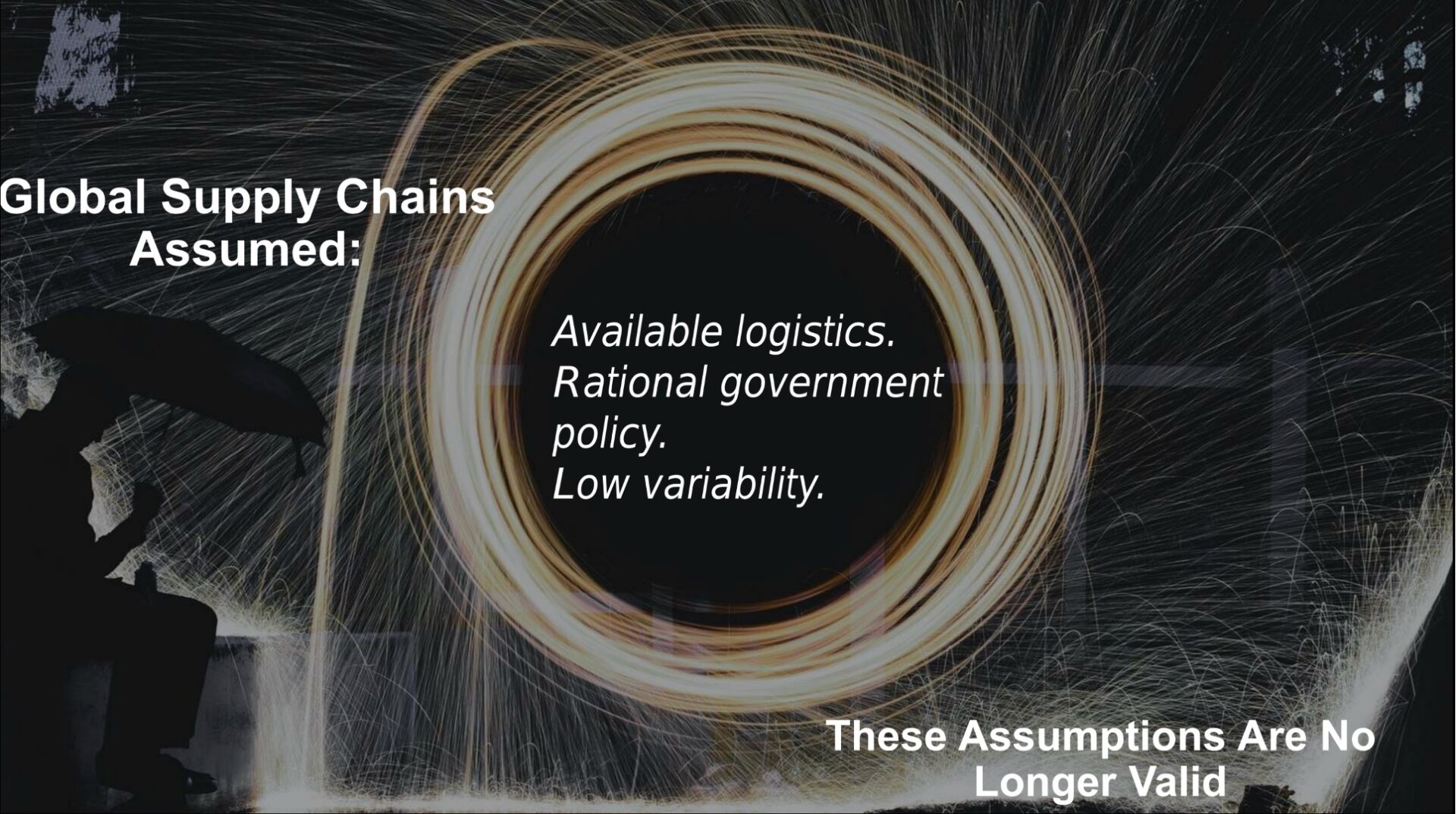Planadigm's approach for a resilient supply chain
Build a Resilient Supply Chain That Withstands Disruption and Fuels Growth.
Leverage visibility, agility, collaboration, and control to stay ahead in a volatile world.
Introduction
In our previous blogs, we wrote about the four pillars of supply chain resilience, resilience on a global scale, and highlighted the resilience of a few specific industries. According to Gartner, the cost of not being resilient is too high nowadays—the risk of becoming obsolete is real. With the speed of change and the unpredictability of our world, you must be resilient. If you are not able to respond quickly to the events happening in your supply chain, you will lag behind and, in the end, have difficulty staying relevant.
How can you become—and stay—more resilient? What are your options? Where do you start? In this blog, we explain our approach to creating a resilient supply chain, and we will use the four pillars as mentioned in our first blog on this topic.
Four Pillars of Supply Chain Resilience
In our previous blog, we explained these four pillars in more detail:
-
Visibility
-
Agility
-
Collaboration
-
Control
When looking at the key areas to optimise in your organisation to become more resilient, we use the default areas:
- Processes: All procedures and processes (formal & informal) that support your business
- People: The people working in your organisation
- Tools: All tools used to support the processes
- Analytics: Data and the ability to analyse the data to extract value
The last, analytics, is sometimes referred to as ‘data’, but in our opinion, data alone doesn’t add value until you turn it into actionable insights. Once you can derive meaning from data by analysing it, it starts to become valuable for an organisation. Therefore, we prefer ‘analytics’ to cover the value-adding activities.
We will dive into each of the four pillars from the angle of the key areas in a company and, at the end, provide a roadmap to become more resilient.

Visibility
Visibility is the ability to look up- and downstream of the supply chain to get early warning signals. Upstream, your suppliers and the suppliers of your suppliers, and downstream, your customers, need to cooperate in sharing valuable information. This covers agreements to be made, which information to share, how additional gains are shared across partners, as well as training staff to be able to analyse the data, using technology that enables fast decision making.
Agility
Agility is the ability to adapt quickly to changes, events in your supply chain. With the right responsibilities and power to enable decision-making closest to the point where issues originate, employees are empowered to make decisions fast. Based on the latest information, including in- and external data, supporting insights can be generated using the right technology, enabling fast decision-making. Collecting which decisions are made and why enables a learning organisation to look back at previous decisions to see their validity.
Collaboration
Without aligned agreements and trained employees, collaboration will be difficult. Legal agreements and consistent effort help build trust, as well as putting in the required effort from all parties involved. And once the benefits become tangible, the earnings need to be shared in upfront agreed portions.
Without the sharing of information and a platform that can be accessed by all parties involved, collaboration will become more difficult to establish. All partners need to have the same information they are entitled to see to align decision making across the supply chain and to be able to react quickly.
Control
Without control, it will be extremely difficult to influence outcomes. By working together, creating agreements upfront on data to share and when, by keeping each other informed of changes, and by aligning on the way benefits are shared, you can control a large part of your supply chain. For that, all four key areas need to be involved. You need the right processes, people, tools, and analytics to stay in control, and will be responding to events (reactive) instead of being able to predict events and become proactive.

Planadigm’s Steps to a Resilient Supply Chain
How do you implement actions to create a resilient supply chain? Where do you start? We understand it can feel overwhelming, which is why we’ve created a simple approach to get you started. Our steps to create a resilient supply chain are the following:
-
Create a long-term vision: What is the goal? Which partners need to be involved? What gains should be achieved?
-
Analyse the current status: Where are we now (processes, people, tools, analytics)? What is the status of our partners?
-
Define the actions to close the gap: Align with all involved partners on the actions required to increase supply chain resilience.
-
Define an action plan: You can’t take all actions at once. A plan must align actions over time, define interdependencies, and consider available resources.
-
Set up the project organisation: Establish a project organisation across partners with a control mechanism to ensure accountability.
-
Implement: Start implementation as soon as possible. Begin with low-hanging fruit to generate early success and create buy-in, while staying focused on the long-term vision.
-
Communicate, communicate, communicate: Maintain open communication lines at all times. Agree on the type and frequency of communication needed to keep everyone aligned.
-
Celebrate success: Celebrate each major deliverable as it’s completed. It marks a step closer to greater resilience and provides an opportunity to measure improvements.
Conclusion
To become more resilient, you must expand collaboration across your supply chain. This collaboration requires trust, transparency, and joint effort. It can’t happen overnight—it takes time—but the benefits for all partners involved far outweigh the challenges of the early stages.
In today’s world, companies don’t win over competitors—value chains do. Working together strengthens bottom-line results for everyone.
We understand that after reading this blog series, you may have questions:
Do I have the right data, processes, people, or tools in place to become more resilient?
Where should I start? Who should be involved? What should I measure?
That’s where we come in. With our extensive expertise, we can support you in building a more resilient supply chain. Grow your business. Grow your people. Become proactive. Be resilient. And increase your bottom-line results!
Let’s Talk
Reach out to us to schedule an appointment and discuss how we can support your supply chain journey.
📞 +31 6 51884701
Let's Talk!


